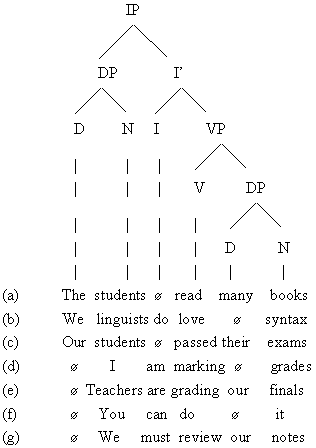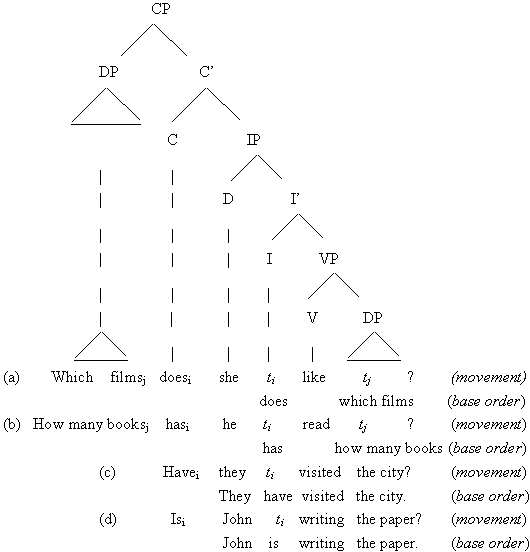
|
Appendix-1: A Final Note on Tree Diagramming For reasons having to do with the myriad of texts currently available on grammar, along with their multifaceted approach to pedagogy, much of the tree diagramming, structure, and examples have been keyed to earlier grammar texts which have arisen out of the tradition of Transformational Grammar (TG). It goes with out saying that TG has greatly changed since then. Therefore, the Chomskyan tree diagrams as presented herein are somewhat out of sink with today's working conception of how theoretical syntax should be diagrammed. In deference of traditional treatments of diagramming, it remains important to stress that even Chomsky himself, at various times, says that much of the debate behind how one should go about diagramming a syntactic structure amounts to little more than notations squabbles. Such inherent misunderstands have, in the past, even spawned new syntactic theories. In any event, a Chomskyan style tree has evolved over the life of the theory and can be more accurately characterized in the following manner: (S)entence: CP>IP>VP with DP (=N) and IP (=V) taking over the roles of functional to lexical categorical status (respectively) in place of the earlier (S)entence = [NP+VP]. A CP denotes the Complementizer Phrase--a phrase headed by a complement (of a verb) or an Auxiliary/Modal which precedes the Subject. An IP denotes Inflectional Phrase--a phrase which houses the Inflection features of the Main Verb. In one basic sense, the CP has arisen out of the need to generate a phrase which sits higher up (in the syntactic tree) from the IP (where the IP is seen as hosting the subject of a declarative sentence). For example, Auxiliary inversion, Wh-movement, other possible adjuncts which may be base-generated lower within an IP which now sit on top of the IP required the instantiation of a CP. The following Tree Diagrams (current to date) come out of Andrew Radford's new text Syntactic theory and the structure of English (1997) and Radford et al.'s (1999) Linguistics: An Introduction. Consider the newly revamped tree diagrams below:
(A-1)
(A-2)
|

